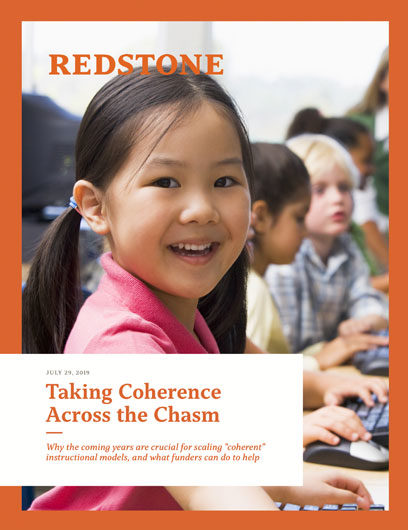The field of education is evolving
It has been clear for years that closing the achievement gap will require systemic change. Research has identified coherence – an aligned system of curriculum, instruction, assessments, and other resources – as a key ingredient in that change. Years of effort by states, districts, schools and educators have built the foundation for the spread of truly coherent instructional approaches. Now, there is a growing push to help districts invest and align the financial and organizational resources necessary to achieve coherence.
Providers need to appeal to pragmatists, not just visionaries
This report analyzes what it will take for providers of coherent models and supports to grow beyond early innovators and reach districts at scale – and how funders and mission investors can help them do so. It covers three case studies (Wake County, NC; East Ramapo, NY; and Tulsa, OK) involving several providers (including EL Education, Leading Educators, and Education Resource Strategies) and focuses on three recommendations:
- Increase compatibility with existing systems by promoting collaboration with continuous improvement efforts that build on the successes of coherent models.
- Improve reliability by providing recyclable capital for iterative product development.
- Increase the influence of evidence through rigorous research on coherent models, leader peer engagement, and supportive infrastructure (e.g., data sharing).
We are grateful to the WK Kellogg Foundation for supporting this work.
Learn more
See this recently published article in The Learning Professional for practitioner-oriented insights on what it takes to succeed with coherent models.
Do you have any questions about the report’s background, content, or implications for your own work? Please reach out. We’d love to help.
